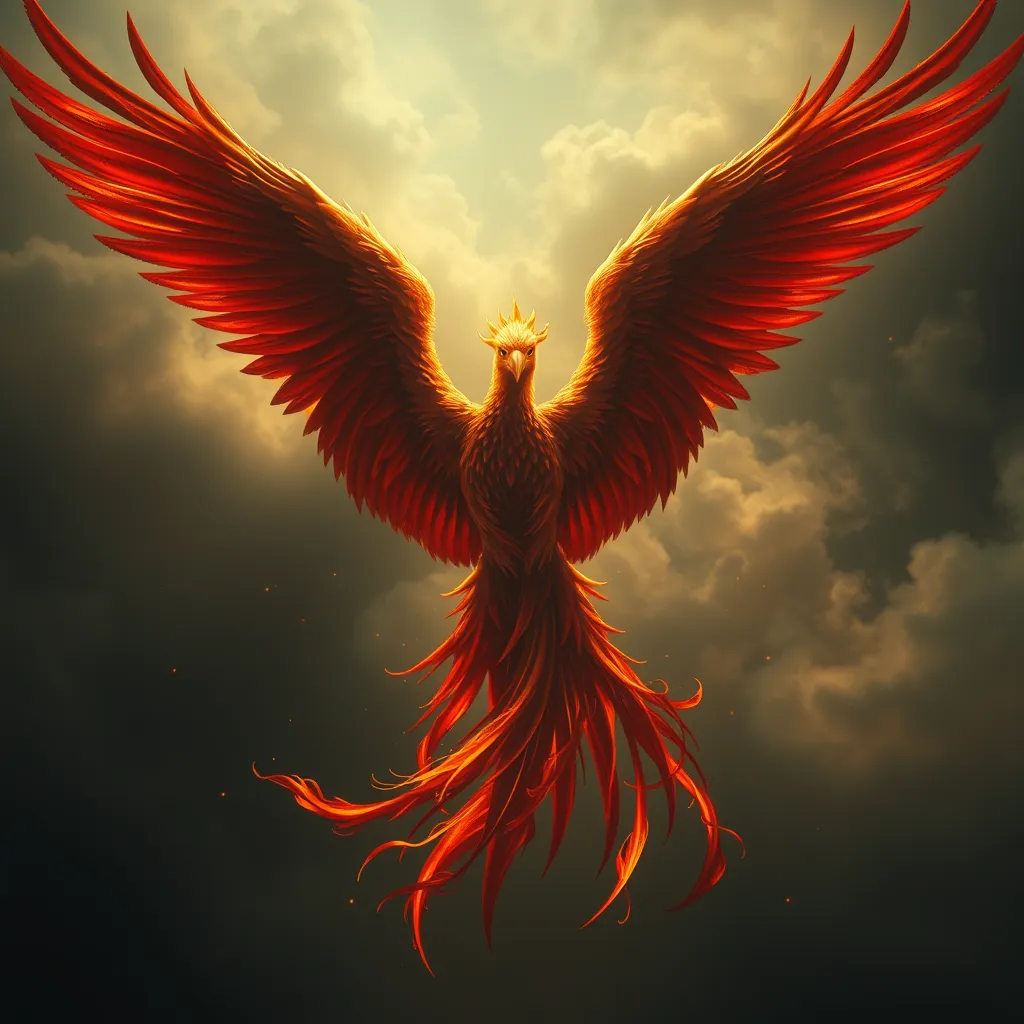The Phoenix in Modern Literature: From J.K. Rowling’s Harry Potter to Margaret Atwood’s Oryx and Crake
I. Introduction
The phoenix, a mythical bird that cyclically regenerates or is reborn from its ashes, serves as a powerful symbol in literature, representing themes of renewal, transformation, and immortality. Throughout the ages, this enduring emblem has captured the imagination of writers, artists, and readers alike.
This article explores the motif of the phoenix in modern literature, focusing on its representation in J.K. Rowling’s “Harry Potter” series and Margaret Atwood’s “Oryx and Crake.” By examining these works, we aim to understand the symbolic significance of the phoenix and its thematic implications in contemporary narratives.
II. The Phoenix as a Symbol of Rebirth and Renewal
The historical significance of the phoenix myth can be traced back to ancient civilizations, including the Egyptians and Greeks, where it was often associated with the sun and resurrection. Its ability to rise from the ashes signifies hope, renewal, and the cyclical nature of life. In modern literature, the phoenix motif carries profound thematic implications:
- Rebirth: The phoenix symbolizes the potential for new beginnings, often emerging stronger after facing adversity.
- Transformation: Characters or societies may undergo significant changes, reflecting the evolution of identity and purpose.
- Hope: The phoenix serves as a beacon of hope, inspiring characters and readers alike to persevere through challenges.
III. The Phoenix in J.K. Rowling’s Harry Potter Series
In the “Harry Potter” series, the character of Fawkes, Dumbledore’s loyal phoenix, serves as a vital embodiment of the phoenix symbol. Fawkes is introduced as a creature that can regenerate, showcasing the resilience associated with the myth.
Fawkes’s symbolism extends beyond mere magical abilities; it resonates deeply with Harry’s journey. The moments where Fawkes appears often coincide with critical points in Harry’s life, where he must confront loss, danger, and ultimately, his destiny:
- Fawkes’s tears: They possess healing properties, reflecting the theme of healing and the power of sacrifice.
- Fawkes’s resurrection: Every time he is reborn, it serves as a metaphor for Harry’s own growth and resilience through trials.
The series encapsulates themes of sacrifice and resurrection, particularly in the climactic moments where love and selflessness lead to salvation, mirroring the phoenix’s rebirth from ashes. This illustrates the idea that true strength often arises from vulnerability and the willingness to protect others.
IV. The Phoenix in Margaret Atwood’s Oryx and Crake
In contrast to the hopeful representation of the phoenix in “Harry Potter,” Margaret Atwood’s “Oryx and Crake” explores the phoenix metaphor within a dystopian context. The story unfolds in a world ravaged by genetic engineering and environmental collapse, where the phoenix signifies rebirth amid destruction.
Atwood presents concepts of rebirth against a backdrop of despair, emphasizing the fragility of life and the consequences of humanity’s actions:
- Snowman’s journey: As the last human alive, his survival reflects the notion of rebirth in a decaying world.
- Creation of Crakers: The genetically modified beings represent a new form of life, symbolizing hope for the future, even as they emerge from the ashes of human civilization.
The role of the phoenix in Snowman’s development reveals the complex interplay between hope and hopelessness, showcasing that renewal can emerge from the darkest of circumstances.
V. Comparative Analysis of Phoenix Symbolism
By contrasting the representations of the phoenix in “Harry Potter” and “Oryx and Crake,” we can discern significant differences in thematic focus:
- Hope vs. Despair: While Rowling emphasizes hope and resilience, Atwood illustrates the bleakness of existence paired with the possibility of renewal.
- Character Development: In “Harry Potter,” characters find strength and purpose through love and sacrifice; in “Oryx and Crake,” characters grapple with the consequences of their actions in a world devoid of moral clarity.
The evolution of the phoenix motif across genres highlights its versatility and the diverse narratives it can support, from high fantasy to stark dystopia.
VI. The Phoenix in Other Modern Works
The phoenix symbol has appeared in various other notable works of literature, showcasing its enduring appeal. Authors such as Neil Gaiman and Ray Bradbury have utilized the phoenix motif to convey themes of renewal and transformation:
- Neil Gaiman: In “American Gods,” the phoenix represents the cyclical nature of gods and myth, embodying the idea that old beliefs must die to make way for new ones.
- Ray Bradbury: In “Fahrenheit 451,” the phoenix symbolizes rebirth, suggesting that even in a world of censorship, literature and ideas can rise anew.
This continued presence in contemporary storytelling highlights the phoenix’s relevance as a symbol of resilience and transformation in the human experience.
VII. The Cultural Impact of the Phoenix in Literature
The phoenix’s influence extends beyond literature into popular culture, resonating with audiences worldwide. It serves as a powerful symbol of resilience, inspiring individuals to overcome personal and collective challenges:
- Influence on Readers: The phoenix has become a metaphor for personal growth and recovery, encouraging readers to embrace their struggles as part of their journey.
- Symbol of Resilience: In modern society, the phoenix represents the ability to rise above adversity, becoming a symbol of hope in various movements and narratives.
VIII. Conclusion
In summary, the phoenix serves as a multifaceted symbol in modern literature, representing themes of rebirth, resilience, and transformation. Through the analysis of J.K. Rowling’s “Harry Potter” and Margaret Atwood’s “Oryx and Crake,” we observe contrasting representations that reveal the complexity of the phoenix motif across genres.
As we reflect on the significance of the phoenix in contemporary literature, it becomes clear that this symbol will continue to evolve, inspiring future generations of writers and readers. The exploration of phoenix themes in literature invites us to consider the profound possibilities of renewal and the enduring spirit of life in the face of adversity.




